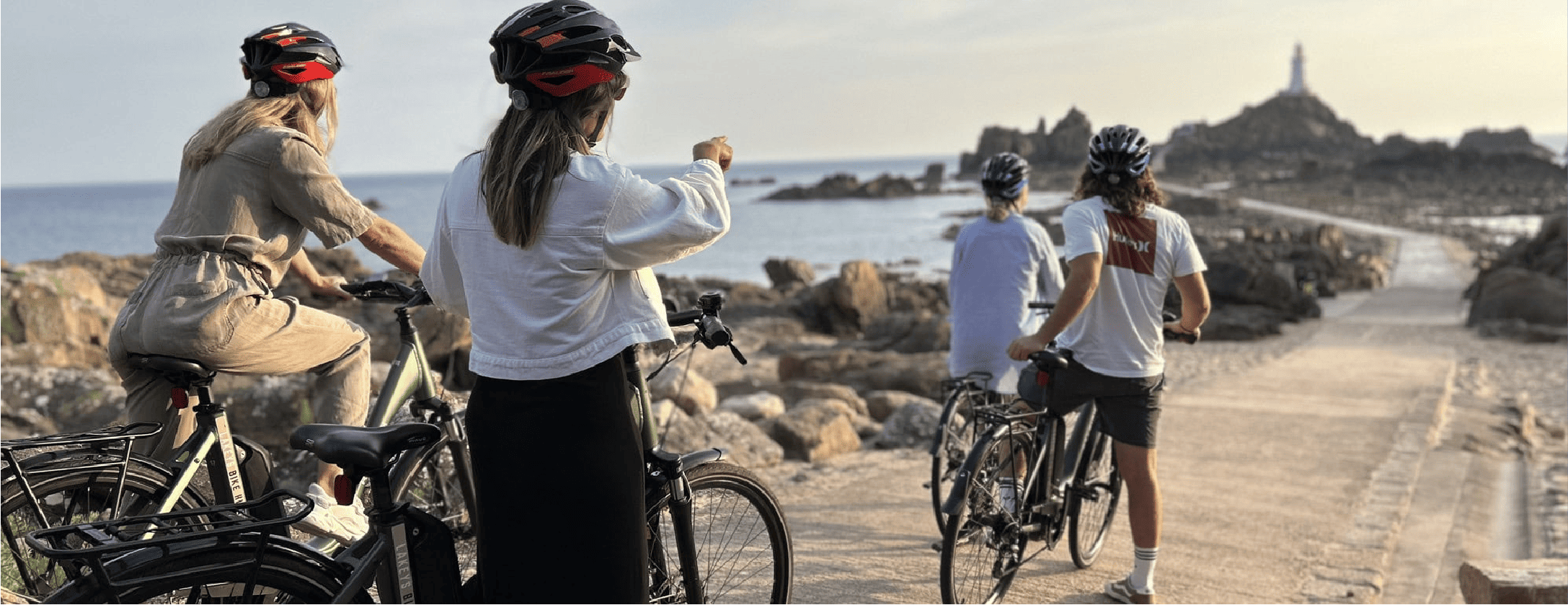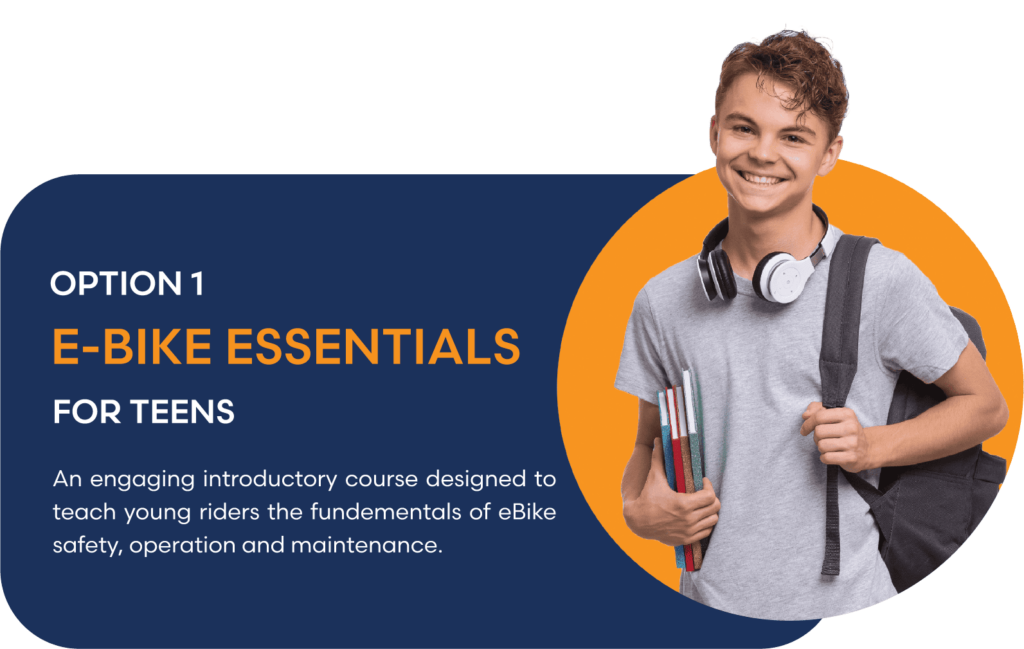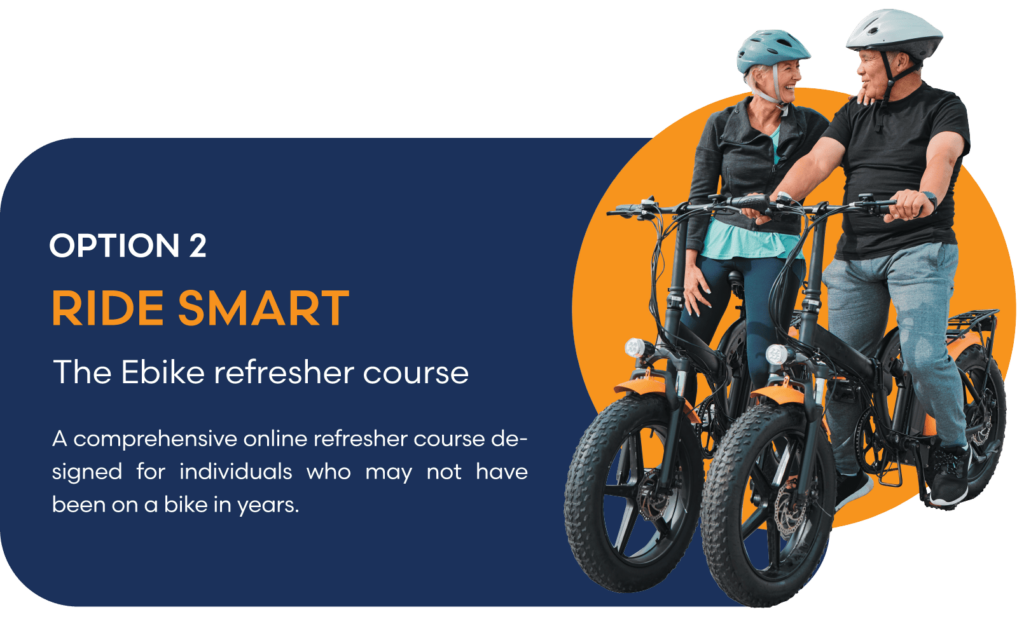How Fast Do eBikes Go? What Parents and Kids Need to Know in 2024
eBikes, or electric bicycles, have surged in popularity as a convenient and eco-friendly mode of transportation. As their use grows, understanding eBike speeds becomes crucial for ensuring safety and compliance with local regulations. This article delves into the various factors that influence how fast eBikes can go, providing essential insights for both riders and enthusiasts.
What is an eBike?
An electric bicycle, commonly known as an eBike, is equipped with an integrated electric motor that assists with propulsion. Unlike traditional bicycles, eBikes offer a combination of manual pedaling and electric power to ease the effort required, especially on challenging terrains.

Explanation of How eBikes Work (Motor, Battery, Pedal-Assist, Throttle)
eBikes function through a combination of components that work together to provide a smooth and enhanced riding experience:
- Motor: The motor is the core of the eBike’s propulsion system. It can be located in the hub of the front or rear wheel (hub motor) or positioned near the pedals (mid-drive motor). The motor assists in propelling the bike forward, reducing the rider’s effort.
- Battery: The battery supplies power to the motor. Typically, eBike batteries are rechargeable lithium-ion packs mounted or integrated into the frame. The battery’s capacity, measured in watt-hours (Wh), determines how far the eBike can travel on a single charge.
- Pedal-Assist: A pedal-assist, or pedelec, is a system in which the motor activates as the rider pedals. Sensors detect the pedaling motion and apply a proportional amount of motor assistance, making it easier to pedal uphill or over long distances.
- Throttle: Some eBikes come with a throttle, usually a twist or thumb control on the handlebar, which allows the rider to engage the motor without pedaling. This feature is similar to that found on scooters and can be useful for quick bursts of speed or starting from a standstill.
Differences Between eBikes and Traditional Bicycles
- Effort: Traditional bicycles rely solely on human power, requiring the rider to pedal to move. eBikes, on the other hand, provide motor assistance, reducing the physical effort needed, particularly on inclines or longer rides.
- Speed: While traditional bicycles’ speed depends entirely on the rider’s pedaling strength, eBikes can maintain consistent speeds with less effort due to motor assistance.
- Range: eBikes can cover longer distances more comfortably thanks to their electric assistance, making them ideal for commuting or extended rides.
- Weight: eBikes are generally heavier than traditional bicycles due to the added weight of the motor and battery.
Understanding eBike Classifications
Overview of Different eBike Classes (Class 1, Class 2, Class 3)
eBikes are classified into three categories based on their level of motor assistance and top speeds:
- Class 1: These eBikes provide pedal assist only, with no throttle. The motor assists up to a speed of 20 mph (32 km/h). Once this speed is reached, the engine stops assisting. Class 1 eBikes are often allowed on bike paths and multi-use trails.
- Class 2: These eBikes have a pedal-assist and a throttle that can propel the bike without pedaling. The motor assists up to 20 mph (32 km/h), similar to Class 1. Class 2 eBikes offer more flexibility for riders who might want to take a break from pedaling.
- Class 3: Known as “speed pedelecs,” these eBikes provide pedal-assist only (no throttle) and can assist up to a speed of 28 mph (45 km/h). Class 3 eBikes are typically used for commuting and are subject to more regulations, often restricted from bike paths and multi-use trails.
Speed Limits and Throttle/Pedal-Assist Distinctions for Each Class
- Class 1: Pedal-assist up to 20 mph; no throttle.
- Class 2: Pedal assist and throttle up to 20 mph.
- Class 3: Pedal-assist up to 28 mph; no throttle.
These classifications help regulate eBike usage and ensure safety for all road and trail users.
Factors Affecting eBike Speed- Motor Power and Types (Hub vs. Mid-Drive Motors)
- Hub Motors: Located in the wheel hub, these motors provide direct power to the wheel. They are simpler and often more affordable but can make the bike feel unbalanced. Hub motors are available in front-wheel or rear-wheel configurations.
- Mid-Drive Motors: Positioned near the bike’s bottom bracket, mid-drive motors deliver power directly to the bike’s drivetrain, providing a more natural riding experience. They offer better weight distribution and are typically more efficient, especially on steep hills.
Battery Capacity and Voltage
- Capacity: Measured in watt-hours (Wh), battery capacity determines how long the motor can assist before recharging. Higher capacity batteries allow for longer rides.
- Voltage: Common voltages for eBike batteries include 36V, 48V, and 52V. Higher voltage batteries can provide more power and better performance, especially for climbing and acceleration.
Terrain and Surface Conditions
- Terrain: Riding on flat, smooth surfaces allows for higher speeds and more efficient battery usage. Conversely, hilly or uneven terrain can reduce speed and increase battery consumption.
- Surface Conditions: Smooth, paved roads facilitate higher speeds, while rough or loose surfaces, such as gravel or sand, can slow the bike down and affect stability.
Rider Weight and Fitness Level
- Weight: Heavier riders require more power to achieve the same speeds as lighter riders, impacting the motor’s efficiency and battery life.
- Fitness Level: More fit riders can contribute more pedaling power, potentially increasing overall speed and reducing reliance on the motor.
Weather Conditions (Wind, Temperature)
- Wind: Riding against strong headwinds can significantly reduce speed and increase battery consumption, while tailwinds can aid in achieving higher speeds.
- Temperature: Extreme temperatures can affect battery performance. Cold weather can reduce battery efficiency, while very hot conditions can lead to overheating.
These factors collectively influence how fast an eBike can travel under various conditions, highlighting the importance of understanding and optimizing each aspect for the best riding experience.
Typical Speed Ranges for eBikes- Average Speeds for Class 1, Class 2, and Class 3 eBikes
- Class 1 eBikes: These bikes provide pedal assistance up to 20 mph (32 km/h). On average, riders typically travel at speeds between 15-20 mph (24-32 km/h) depending on terrain and rider effort.
- Class 2 eBikes: Similar to Class 1 in terms of maximum assisted speed (20 mph), but with the added option of throttle control. Riders generally experience average speeds around 15-20 mph, benefiting from the throttle to maintain consistent speeds on flat terrain or when starting from a stop.
- Class 3 eBikes: These bikes offer pedal-assist up to 28 mph (45 km/h), making them the fastest category of eBikes. Average riding speeds for Class 3 eBikes often range between 20-28 mph (32-45 km/h), suitable for commuting and more extended distance travel.
Speed Comparisons with Traditional Bicycles and Scooters
- Traditional Bicycles: Average speeds for traditional bicycles vary widely based on the rider’s fitness level and terrain but typically range from 10-15 mph (16-24 km/h). Compared to eBikes, traditional bikes require more effort to maintain higher speeds, especially on inclines.
- Scooters: Electric scooters generally have top speeds between 15-20 mph (24-32 km/h), similar to Class 1 and Class 2 eBikes. Scooters are more compact and less stable at higher speeds compared to eBikes, making eBikes a preferred choice for longer rides and higher speeds.
Real-World Examples and User Experiences
- Commuters: Many urban commuters use Class 1 or Class 3 eBikes to navigate city traffic efficiently. For example, a Class 3 eBike rider may cover a 10-mile commute in about 30 minutes, consistently maintaining speeds close to 28 mph on bike lanes.
- Recreational Riders: Casual riders often opt for Class 1 or Class 2 eBikes for leisurely rides. A Class 1 eBike rider enjoying a weekend trail might average around 15 mph, appreciating the pedal-assist on uphill segments.
- Adventure Seekers: Riders exploring off-road trails with mid-drive motors can benefit from Class 3 eBikes, achieving higher speeds on rugged terrain with motor assistance.
What’s the Fastest Legally an eBike Can Go? Overview of Legal Speed Limits for eBikes in Different Countries and Regions
- United States: eBikes are classified into three categories with specific speed limits. Class 1 and Class 2 eBikes are limited to 20 mph, while Class 3 eBikes can reach speeds up to 28 mph. These limits are enforced to ensure safety and consistency across states.
- European Union: In the EU, eBikes with pedal assist are limited to 25 km/h (15.5 mph). Speed pedelecs (similar to Class 3) can reach up to 45 km/h (28 mph) but are subject to additional regulations, such as mandatory insurance and licensing.
- Australia: Australian regulations cap pedal-assist eBikes at 25 km/h (15.5 mph), aligning with EU standards. Throttle-controlled eBikes are also limited to lower speeds, typically around 6 km/h (3.7 mph) without pedaling.
- Canada: Similar to the U.S., Canada’s regulations allow eBikes to assist up to 32 km/h (20 mph), with some provinces permitting higher speeds for specific categories.
Specific Speed Limits for Class 1, Class 2, and Class 3 eBikes
- Class 1: 20 mph (32 km/h) with pedal assist only.
- Class 2: 20 mph (32 km/h) with pedal-assist and throttle.
- Class 3: 28 mph (45 km/h) with pedal-assist only.
Importance of Adhering to Legal Speed Limits for Safety and Compliance
- Safety: Adhering to speed limits ensures that riders maintain control and stability, reducing the risk of accidents and injuries. Higher speeds increase stopping distances and can make navigating obstacles more challenging.
- Compliance: Staying within legal speed limits helps riders avoid fines, penalties, and potential legal issues. It also ensures that eBikes can be used on designated paths and trails without restrictions.
- Community Trust: By following regulations, eBike riders contribute to a positive perception of eBikes within the community, encouraging broader acceptance and support for eBike infrastructure.
Legal Speed Limits and Regulations – Overview of Speed Regulations in Different Countries and Regions
- United States: Speed regulations for eBikes vary by state but generally adhere to the three-class system (20 mph for Class 1 and 2, 28 mph for Class 3). Riders must comply with state-specific rules regarding helmet use, age restrictions, and where eBikes can be ridden.
- European Union: EU regulations limit pedal-assist eBikes to 25 km/h (15.5 mph). Speed pedelecs, capable of 45 km/h (28 mph), require insurance, registration, and sometimes a license. Riders must also wear a helmet.
- Australia: eBikes are limited to 25 km/h (15.5 mph) with pedal-assist. Throttle-only operation is restricted to low speeds (6 km/h or 3.7 mph) without pedaling.
- Canada: eBike regulations in Canada generally follow U.S. standards, with a maximum assisted speed of 32 km/h (20 mph). Provincial variations exist, so riders must check local laws.
Importance of Adhering to Local Laws and Safety Standards
- Legal Compliance: Following local regulations ensures that riders are legally protected and avoid penalties. It also helps maintain the bike’s legal status and use on public roads and trails.
- Safety Standards: Adhering to safety standards, such as wearing helmets and using lights, enhances rider safety and visibility, reducing the risk of accidents.
- Insurance Coverage: Compliance with local laws ensures that insurance policies remain valid, providing coverage in case of accidents or theft.
Consequences of Exceeding Legal Speed Limits
- Fines and Penalties: Exceeding speed limits can result in fines, legal penalties, and possible confiscation of the eBike. Repeat offenses may lead to more severe consequences.
- Increased Risk of Accidents: Higher speeds increase the likelihood of losing control and being involved in accidents, posing dangers to the rider and others.
- Legal Liability: In case of an accident, riding an eBike at illegal speeds can result in greater liability, potentially affecting insurance claims and legal outcomes.
Enhancing eBike Performance
Tips for Optimizing eBike Speed Within Legal Limits
- Proper Tire Inflation: Ensure that your eBike tires are inflated to the recommended pressure. Under-inflated tires create more rolling resistance, which can slow you down.
- Reduce Weight: Remove any unnecessary accessories or items from your eBike to lighten the load and improve speed.
- Streamlined Riding Position: Adjust your riding position to be more aerodynamic. Lowering your body and keeping your elbows tucked in can reduce wind resistance.
- Use Higher Pedal Assist Levels: When legal and safe, use the higher levels of pedal-assist your eBike provides to maintain higher speeds with less effort.
- Pedal Efficiency: Use efficient pedaling techniques, such as maintaining a consistent cadence and using your bike’s gears effectively to optimize your speed.
Upgrading Components (Motors, Batteries, Tires)
- Motors: Upgrading to a more powerful motor can enhance speed and acceleration. However, be mindful of the legal power limits in your area.
- Batteries: Investing in a higher capacity battery (measured in watt-hours) can extend your range and provide consistent power output, helping you maintain higher speeds over longer distances.
- Tires: Switching to lighter, smoother tires designed for road use can reduce rolling resistance and increase speed. Ensure that the tires are compatible with your eBike’s specifications.
Regular Maintenance Practices for Peak Performance
- Regular Cleaning: Keep your eBike clean, especially the drivetrain, to reduce friction and wear on components.
- Lubrication: Regularly lubricate the chain, gears, and other moving parts to ensure smooth operation and minimize resistance.
- Brake Adjustments: Ensure that your brakes are properly adjusted to avoid drag while maintaining effective stopping power.
- Battery Care: Follow proper charging practices to maintain battery health. Avoid letting the battery completely drain and store it in a cool, dry place.
- Tire Check: Inspect tires for wear and tear, and replace them when necessary. Properly maintained tires ensure better traction and speed.
Common Questions About eBike Speeds
Can eBikes Go 30 mph?
- Potential: Some Class 3 eBikes can reach up to 28 mph with pedal assist. Riders may briefly exceed this speed with strong pedaling efforts or on downhill stretches.
- Limitations: Most eBikes are legally restricted to 28 mph for pedal-assist. Riders must be cautious about exceeding these speeds to stay within legal and safety limits.
Can eBikes Go 40 mph?
- Potential: Custom-built or modified eBikes with high-powered motors and batteries can reach 40 mph, particularly on downhill sections.
- Limitations: Achieving 40 mph significantly exceeds most legal speed limits for eBikes. Such modifications can result in legal issues and increased safety risks.
Can eBikes Go 50 mph?
- Potential: While it is technically possible to modify an eBike to reach 50 mph, this would require substantial upgrades to the motor, battery, and other components.
- Limitations: Riding an eBike at 50 mph is dangerous and illegal in most areas. The structural integrity of standard eBikes may not support such high speeds, increasing the risk of accidents and mechanical failure.
Explanation of the Potential and Limitations for Reaching These Speeds
- Potential: High-speed eBikes with specialized components and advanced engineering are typically custom-built for racing or off-road use.
- Limitations: Legal restrictions, safety concerns, and the practical limitations of standard eBike designs prevent most commercial eBikes from reaching speeds above 28 mph. Modifications to achieve higher speeds can void warranties and lead to severe legal consequences.
Discussion on Safety and Legal Implications of High-Speed eBikes
- Safety Concerns: Higher speeds increase the risk of accidents, reduce reaction times, and require more advanced riding skills. Protective gear and enhanced braking systems become crucial.
- Legal Implications: Exceeding legal speed limits can result in fines, confiscation of the eBike, and potential legal liabilities in case of accidents. Riders must understand and adhere to local regulations to avoid these issues.
Safety Considerations at High Speeds- Protective Gear Recommendations (Helmets, Gloves, Pads)
- Helmets: Always wear a high-quality helmet that meets safety standards. For high-speed riding, consider full-face helmets for added protection.
- Gloves: Wear padded gloves to protect your hands and improve grip on the handlebars.
- Pads: Use elbow and knee pads to protect against injuries in case of falls or collisions.
Riding Techniques for Handling Higher Speeds Safely
- Maintain Control: Keep both hands on the handlebars and be prepared to brake. Avoid sudden movements and keep your body relaxed.
- Stay Alert: Pay attention to your surroundings, including other vehicles, pedestrians, and potential obstacles. High speeds reduce reaction times, so anticipate hazards.
- Smooth Braking: Use both brakes evenly to slow down gradually. Avoid abrupt braking to prevent skidding and loss of control.
Importance of Regular eBike Inspections and Tune-Ups
- Regular Inspections: Check your eBike for any signs of wear and tear, especially on critical components like brakes, tires, and the drivetrain.
- Professional Tune-Ups: Schedule regular tune-ups with a professional to ensure that your eBike is in optimal condition. This includes checking the motor, battery, and electronic systems.
- Safety Checks: Before each ride, perform a quick safety check of your eBike, including tire pressure, brake function, and battery charge.
eBikes offer a versatile and efficient mode of transportation with speeds that can accommodate various riding needs and preferences. Generally, eBikes are classified into three categories, with top speeds ranging from 20 mph for Class 1 and 2 eBikes to 28 mph for Class 3 eBikes. While some eBikes can be modified to reach higher speeds, it’s essential to adhere to legal speed limits and prioritize safety. By understanding the factors influencing eBike speeds and following best practices, riders can enjoy a safe, enjoyable, and efficient eBike experience.


